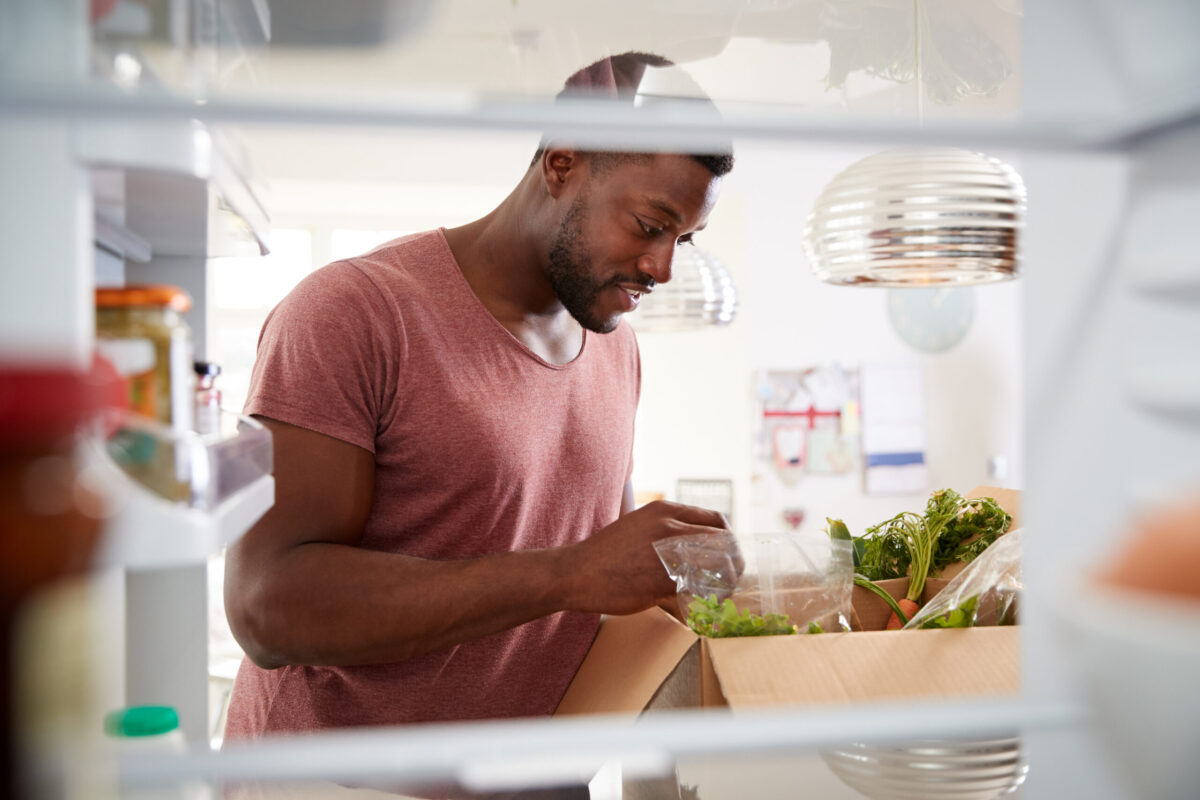These days, most of us spend a lot of time staring into our fridges, and it’s not always a pretty picture.
Even if you take the time to clean and organize everything, there will probably come a day you’ll run across something in your refrigerator that is way past its prime. We’ve all been there, says Brian Jones, registered dietitian at BlueCross BlueShield of Tennessee. But there are simple steps we can take to safeguard against it.
“In the food safety business, the most important rule is ‘first in, first out,’ or the ‘FIFO method,’” says Jones. “If you keep the things that you need to use first more accessible, you’re less likely to have things lurking in the back and spoiling.”
Here are 8 other tips to keep your fridge safe and organized.
1. Use “first in first out” for leftovers.
First in first out is especially important when it comes to meal planning, says Jones.
“If you make a roast on Tuesday and spaghetti on Wednesday, eat the leftover roast Thursday,” he says. “Eating things in the order you made them is the best way to avoid food waste and illness.”
2. Opt for clear containers.
“Out of sight, out of mind” is the rule in most fridges, which makes clear containers the best choice. Organize produce, dairy or deli meats in clear, labeled bins, and try not to use any containers you can’t see through.
“Growing up, I couldn’t tell which container was ambrosia salad and which was bacon fat!” Jones says, laughing. “Now I know that using opaque containers for leftovers is not only bad for organization — it’s bad for safety. Those containers aren’t made to be reused, which means they’re not as airtight or safe for food storage.”
3. Label everything.
Label every container with a name and date before it goes in the fridge. Use glass markers or painter’s tape and a Sharpie. If you’re putting takeout in the fridge, consider portioning them out into clear containers, and always write a date on them.
4. Organize duplicates.
If you have several of something — milk for example — put the older carton in front so you’ll use it first. Apply this rule to your pantry, too, where duplicate items are common.
5. Put perishables on top.
“Keeping perishables at eye level is a great insurance policy,” says Jones. “If you have vegetables in the refrigerator that you know you need to eat the next day, move them to the top shelf so you don’t forget.”
6. Safely store meat & seafood.
Store raw meat or seafood on the lowest shelf possible. If it can’t go on the very bottom, put it on a tray so it can’t drip on other foods. Never store raw meat or seafood with fresh produce.
7. Try a new shelf arrangement.
If you have a fridge with moveable shelves, try rearranging them:
- Dedicate an eye-level shelf to leftovers, cooked foods and produce.
- Use middle shelves for milk, juice, eggs or other items that you use often enough you don’t need to see them to be reminded they’re there.
- Use the door — often the warmest part of the fridge — to store condiments, beverages, citrus or other less perishable items.
8. Clean often.
Set a monthly reminder to clean your fridge. Not only will it keep food safe, but it may also remind you to use things that are set to expire soon.
For more on food safety and organization:
- 5 takeout tips for ordering out the healthy way
- 7 ways to organize your kitchen like a professional chef
Get more information about specific health terms, topics and conditions to better manage your health on bcbst.com. BlueCross BlueShield of Tennessee members can access wellness-related discounts on fitness products, gym memberships, healthy eating and more through Blue365®. BCBST members can also find tools and resources to help improve health and well-being by logging into BlueAccess and going to the Managing Your Health tab.


